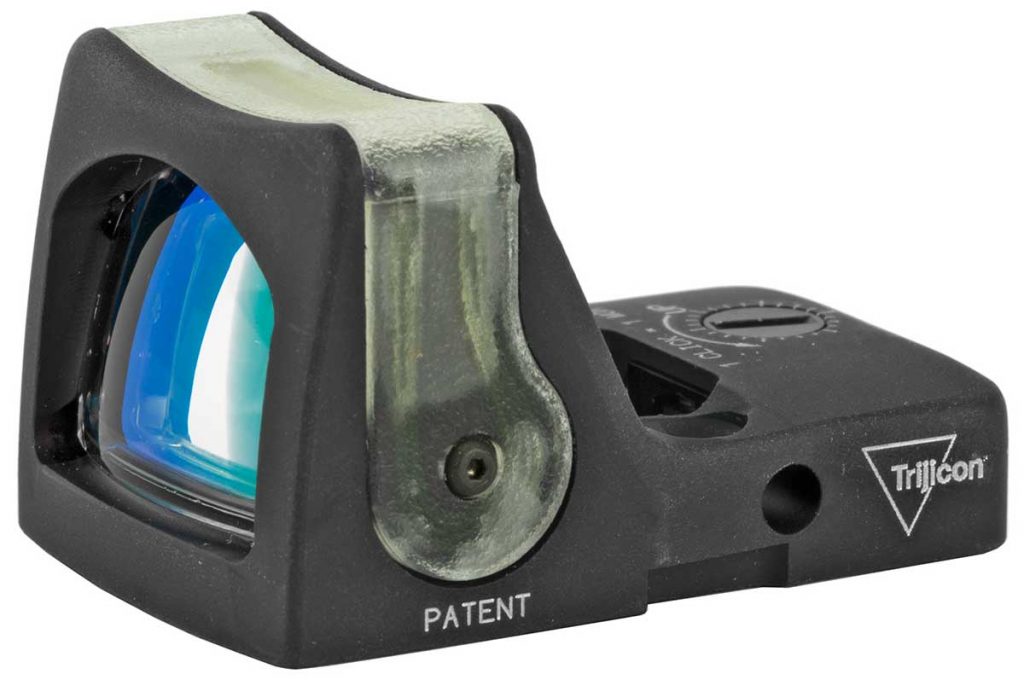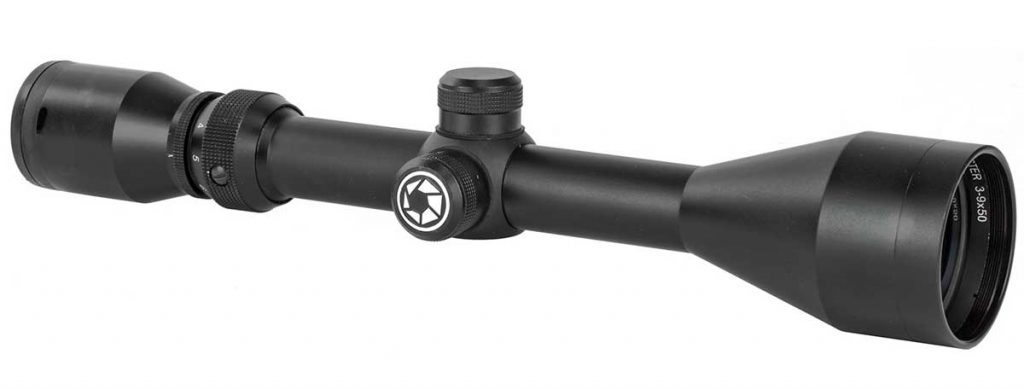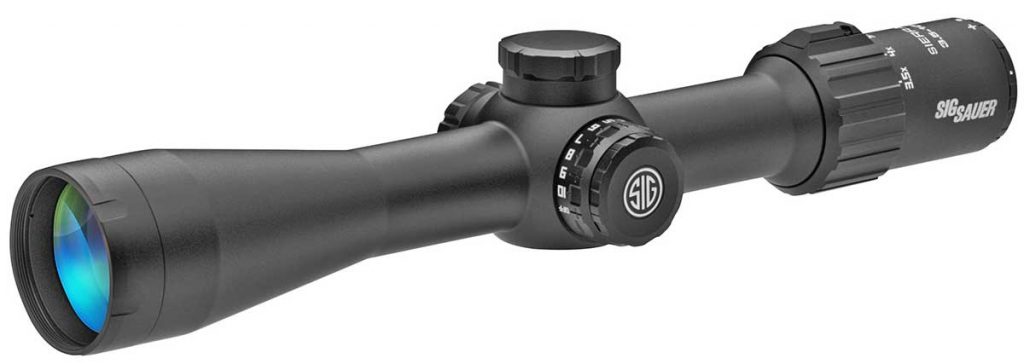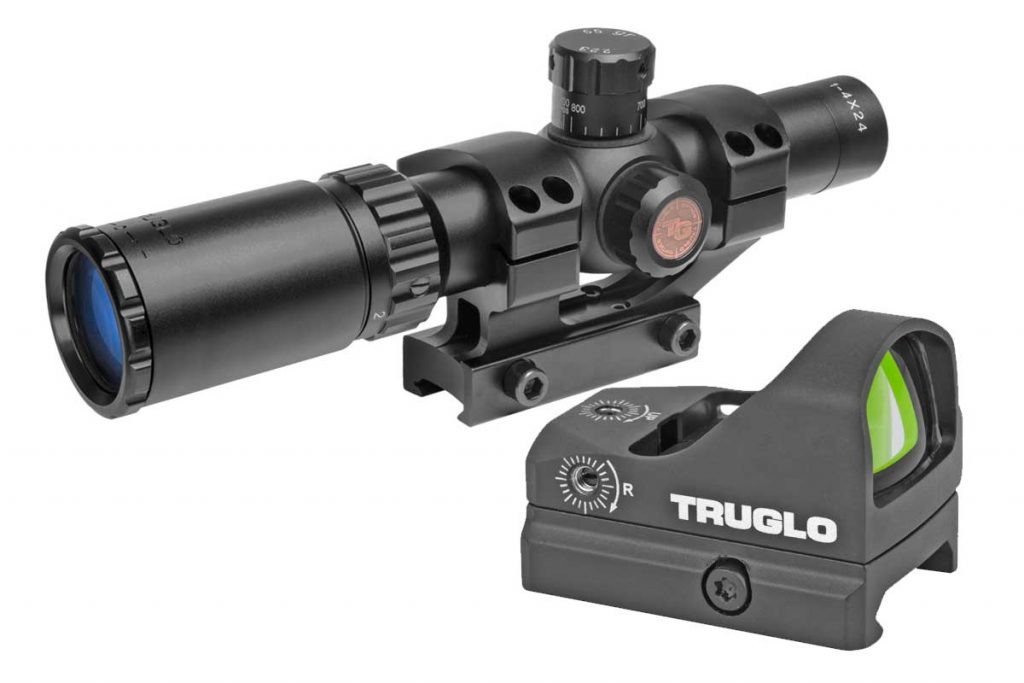New users of AR-15s or other rifles and their various attachments might consider mounting an optic of some kind onto their new weapon. We don’t blame anyone looking to buy a new optic – there’s nothing sweeter than hitting an impossible target with the help of a slick new scope or sight!
But those same beginners also likely to ask whether they’d be better off mounting a rifle scope or a red dot optic. In truth, both optics are valuable, but they’re designed for totally different purposes.
Let’s do a detailed breakdown of red dot optics vs scopes so you can determine which is right for your build or rifle.

Red Dot Optics – Detailed Breakdown
A red dot optic is both simpler and more complex than a typical rifle scope. In a nutshell, a red dot optic is a tube that projects a red dot onto glass at the end of that tube. When properly prepared and mounted, a red dot optic appears to paint that dot onto your target, helping you with accuracy in the short-range. You can see our Truglo TRU-TEC Micro Red Dot 23mm here.
What Do They Do?
Red dot optics allow for faster target acquisition by placing a glowing red dot on the projected impact area of a shot for your rifle. This is advantageous because the human eye can more quickly lock onto a bright red dot compared to a target beyond the optic, which may even be blended in with the surrounding scenery. You can check out US Optics DRS 2.0 on their site too, as well as ours.
Furthermore, red dot optics can be used with both eyes open, giving the user excellent peripheral vision and a wider sight picture: two factors that may be important when shooting or hunting in close quarters environments.
Red dot optics can be mounted relatively easily a rifle, and most come adjusted to eliminate parallax automatically out to 100 yards.
What Are They Used For?
Red dot optics are typically used for short-range shooting and tactical engagements. But they can also be used for hunting so long as the target is within 100 yards or so. Because of their size, some red dot optics are used in conjunction with iron sights.
However, red dot optics cannot be used for long-range shooting as they do not magnify your sight picture whatsoever. Furthermore, red dot optics all run on batteries that eventually die. This necessitates occasionally replacing the battery and prevents some optics from working in wet or inclement weather.
Pros
- Offers unobstructed vision
- Helps you quickly acquire a target
- Great for boosting accuracy against moving targets
- Easy to set up and use quickly
Cons
- No magnification
- Run on batteries – may be fragile/inappropriate for rainy weather
Scopes – Detailed Breakdown
Regular rifle scopes can best be thought of as telescopes you mount on your weapon. They magnify your sight picture to some degree and can be used to “zoom in” to your target. They don’t normally paint a glowing dot on your target, but may use additional lines or hash marks to help with bullet drop compensation or other variables.

What Do They Do?
Magnifying rifle scopes can increase how far you can see when sighting down the scope’s tube. Scopes come in either fixed or variable versions: fixed scopes have one set magnification power, while a variable scope can magnify between a range of powers (for instance, between 2x and 7x).
Scopes boost your accuracy by letting you line up your crosshairs more closely or accurately on your target, even when they’re far away. They can also help you compensate for factors like windage or elevation through etched lines or markings on the scope’s interior lenses.
Scopes must be carefully mounted and “zeroed” before being used, however. This necessitates significant preparation time. On the plus side, scopes don’t normally have batteries unless they use an illuminated reticle, which can assist with nighttime shooting or with hunting in bright environments.
What Are They Used For?
Rifle scopes are mostly used for long-distance hunting and sniping. Because of this, they’re not normally used for urban combat tactical scenarios or for short-range hunting. That’s because all scopes have an ideal “eye relief” distance, or a zone of effectiveness where your eye must be a certain distance from the scope to see the full sight picture down the scope’s length.
You can read some more on Rifle Scopes by Sig Sauer here. And if you cannot find a product you are looking for on our website or elsewhere, PLEASE CALL US. We’ll find it!

As a result, scopes don’t provide good peripheral vision and can blind you to threats in your immediate area. They may also be inappropriate for tracking moving targets, unless those targets are very far from you.
Pros
- No batteries unless the reticle is eliminated
- Offers excellent long-range vision when properly calibrated
- Can be used in inclement weather in most cases
Cons
- Must be zeroed and properly mounted – lots of preparation required
- Not good for maintaining peripheral vision
Which Do You Need – A Red Dot Optic or a Scope?
As you can see, red dot optics and scopes are both mounted on rifles, but they serve completely different purposes. In the broad strokes, red dot optics are ideal for:
- short-range engagements
- fast target acquisition
- maintain good peripheral vision
Meanwhile, rifle scopes are best for:
- long-range hunting and sniping
- tracking a target from a distance
- making a shot while compensating for bullet drop, windage, and elevation
You can determine whether you need a red dot optic or a scope depending on what you’re planning to do.
If you’re planning on only using your rifle at engagement distances of around 100 yards or so, a scope is likely an unnecessary investment. Your scope will take too long to constantly recalibrate and you’ll likely need to move around often. A red dot optic is easier to mount, gives you better peripheral vision, and lets you acquire your target and track that target while its moving better than any rifle scope.
In contrast, if you’re hunting targets upwards of 100 yards, and will take the time to set up your shot and want ultra-high accuracy, a rifle scope is the way to go. Rifle scopes can let you hit targets all the way out to 1000 yards away or even further depending on your experience level and the magnification power offered by the scope in question.
Summary
Ultimately, both types of optics have their place in a marksman’s kit. But both should be used according to their purposes, not outside of them. If in doubt, consider purchasing one of each type over time and learning how to properly mount and swap them out when necessary.

